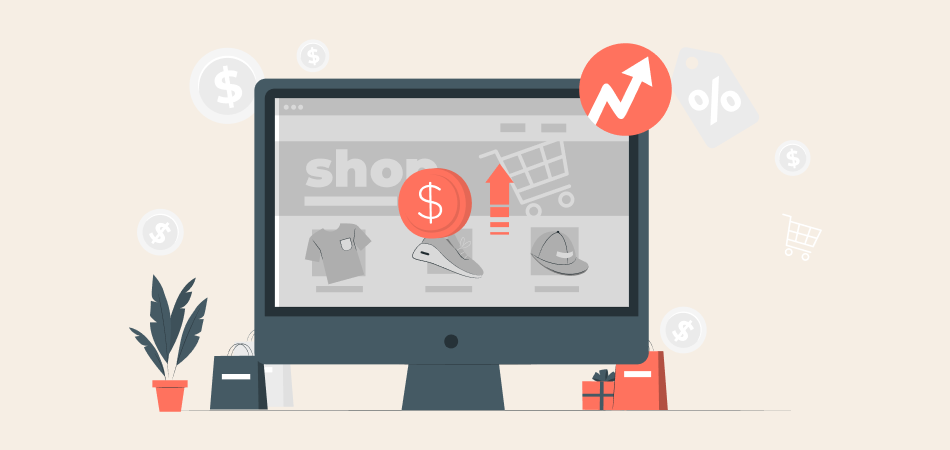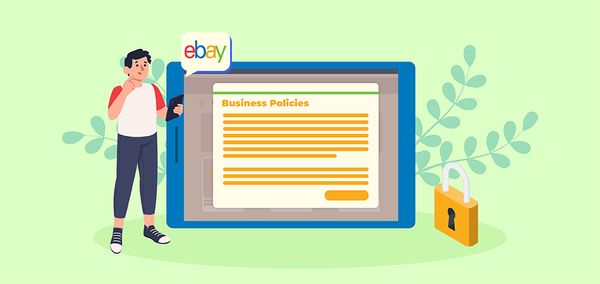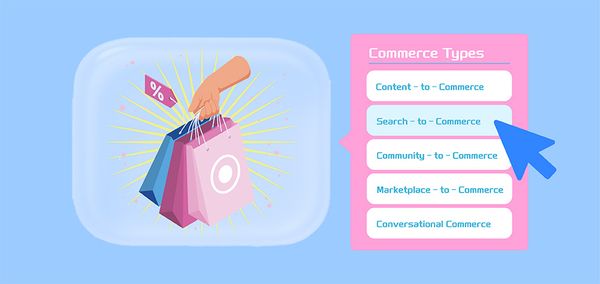How to Maximize Profit with the 11 Crucial eCommerce Metrics

When eCommerce was a new concept it was not so difficult for the businessmen to get success quickly. But now, the scenario has changed, nowadays anyone can create an eCommerce website just from scratch and start his own business but the most important problem he would face is high-range competition. That is why it is needed to gain knowledge of different eCommerce Metrics to become ahead of the competitors in this industry.
In this article, we will talk about nine metrics related to eCommerce to help you run a more profitable and productive online store this time.
11 Essential eCommerce Metrics
The eCommerce Metrics are the lifeblood of your online store, providing insightful data on a range of business-related topics. Let’s check these metrics you should master in 2024 one by one.
1. Customer Acquisition Cost
While starting your eCommerce business, you would better create an appropriate business model in any case. You have to make each block of your business impactful and helpful to gain traffic and revenue. Getting a correct calculation of Customer Acquisition Cost is one of the first and foremost important metrics in this case. A customer's acquisition cost (CAC) is a measurement of the money invested in bringing them on board.
Here's how to lower the cost of acquiring new customers:
- Create a potent retargeting Google Ad campaign: Creating a better client experience can be facilitated by selecting targeted keywords wisely and combining them with an efficient landing page. Retargeting might assist you in attracting previous website or shop visitors back into your sales funnel.
- Utilize word-of-mouth and referrals: You've done a wonderful job if your current consumers recommend people to your store. While ensuring you gain new clients who believe in your items, referrals don't raise your expenses.
- Make use of the free channels: When advertising your store, use a combination of paid and free channels. There are many natural ways to expand your brand's reach with social media.
2. Customer Lifetime Value
Predicting the customer lifetime value or CLV is the most avoided but one of the most essential eCommerce Metrics of this time. It speaks to the value that a client will offer over a given duration. You'll find important information regarding the customer's purchasing process when calculating CLV, which will assist you in identifying several bottlenecks that may be resolved. You can make important choices about how much money you wish to invest in acquiring new clients.
So how could you raise it? Here are some ways to follow:
- Enhance post-purchase engagement: Engage with customers after their purchase through personalized communication channels such as email marketing, SMS campaigns, or loyalty program notifications. By offering relevant product recommendations, exclusive offers, and helpful tips, you can keep customers connected to your brand and encourage repeat purchases, thereby increasing their lifetime value.
- Implement tiered loyalty programs: By offering enticing incentives such as exclusive discounts, early access to sales, or VIP perks, you can motivate customers to increase their purchases and strive to reach higher loyalty tiers, ultimately boosting their lifetime value to your business.
- Provide exceptional customer service: Promptly address inquiries, resolve issues effectively, and go above and beyond to exceed customer expectations. By providing a seamless and memorable shopping experience, you can foster strong brand loyalty and encourage customers to continue patronizing your eCommerce store, thereby maximizing their lifetime value.
3. Revenue
Revenue represents the total earnings of a business before subtracting operating expenses and overhead costs such as inventory management and shipping fees. This practical key performance indicator (KPI) in e-commerce provides insights into the amount of money generated and enables accurate calculation of business profits. It serves as a valuable metric to assess overall e-commerce success.
By gaining an understanding of monthly revenue, businesses can make informed decisions to enhance performance. Strategies to boost revenue may involve adjusting product prices, implementing upselling techniques and discount offers to increase average order value (AOV), and leveraging social media engagement and other marketing initiatives to attract more customers and transactions.

|
Adapt Your Product Prices Automatically DSers Automatic Pricing - Pre-set Pricing Rule to mark-up your product price automatically |
4. Customer Retention Rate
Focusing on Customer Retention Rate can be considered as the 4th important metric of the eCommerce Metrics on a serious note. According to research, A customer's likelihood of making another purchase from your online store after their initial purchase is 27%. There's a 49% probability they'll buy again after their second purchase. Following a third purchase, the probability rises to 62%.
You can affect your client retention rate in the following ways:
- Personalized communication: Implement personalized email marketing campaigns, tailored product recommendations, and exclusive offers based on customer preferences and past purchase behavior to foster a deeper connection and encourage repeat purchases.
- Loyalty programs: Introduce loyalty programs that reward customers for their continued patronage, such as points-based systems, tiered membership levels, or exclusive perks for loyal customers. These incentives can increase retention by encouraging repeat business and fostering a sense of belonging.
5. Sales Conversion Rate
As one of the most important eCommerce Metrics, let’s discuss SCR in detail. If an eCommerce business neglects to optimize its conversion rate, several consequences may arise. Firstly, a low SCR can lead to missed revenue opportunities, as a significant portion of website traffic fails to translate into sales. Additionally, poor conversion rates may indicate underlying issues with the user experience, such as complex navigation, slow loading times, or confusing checkout processes, which can result in frustrated customers and higher bounce rates.
To achieve the best conversion rates, eCommerce businesses must focus on optimizing various aspects of the user experience.
- Streamline the checkout process: This includes streamlining the checkout process to minimize friction and reduce cart abandonment rates. Simplifying product selection, providing transparent pricing, and offering multiple payment options can all contribute to a smoother purchasing journey. Furthermore, leveraging persuasive techniques such as compelling product descriptions, customer reviews, and limited-time promotions can incentivize visitors to complete their purchases.
- Provide continuous testing: Continuous testing and analysis are also essential for optimizing conversion rates. A/B testing different website elements, such as call-to-action buttons, page layouts, and pricing strategies, can help identify which changes yield the most significant improvements. By closely monitoring SCR and iterating on strategies based on data-driven insights, eCommerce businesses can continuously refine their sales funnels to maximize conversion rates and drive sustainable revenue growth.
6. Average Order Value
Calculating the Average Order Value (AOV) is essential for evaluating marketing and pricing strategies, as it indicates the average amount customers spend per transaction. AOV is determined by dividing the total revenue generated by the total number of orders within a specific period. Increasing AOV can be achieved by encouraging customers to purchase more items or opt for higher-priced products.
Let’s Focus on how to increase Average Order Value (AOV) in eCommerce businesses:
- Bundle discounts: Offer bundled discounts or package deals where customers can save money by purchasing multiple related products together. By showcasing these bundles as value-added propositions, customers are more likely to perceive the offer as a cost-effective solution compared to buying each item individually. It encourages them to add more items to their cart to qualify for the bundled discount, thereby increasing the overall AOV per transaction.
- Threshold-based offers: Implement threshold-based offers that reward customers with discounts or free gifts once they reach a certain spending threshold. For example, offer a 10% discount on orders over $100 or provide a free gift for orders exceeding $50. This tactic not only incentivizes customers to spend more to unlock the offer but also adds a sense of urgency to their purchase decision.
7. Cart Abandonment Rate
Cart abandonment is pretty typical for eCommerce shops, regardless of how amazing your sales funnel is and how alluring your offers are to your visitors. Cart abandonment is pretty typical for eCommerce shops, regardless of how amazing your sales funnel is and how alluring your offers are to your visitors. Addressing the underlying reasons for cart abandonment, such as unexpected costs or complicated checkout procedures, can significantly impact conversion rates and revenue.
To improve your cart abandonment rate, consider the following strategies:
- Implement persuasive CTAs: Design compelling call-to-action buttons that encourage customers to complete their purchases. Highlight unique selling points (USPs) or evoke emotions that resonate with your target audience to increase conversion rates effectively.
8. Profit Margin
Profit margin is a business metric that reveals the percentage of revenue retained as profit after deducting costs. It provides insights into how effectively an e-commerce business converts revenue into profit. Calculated by dividing profit by revenue and converting it to a percentage, profit margin helps determine if there is room for improvement.
To enhance profit margins, e-commerce businesses need to grasp their overall performance and its impact on the current margin. This involves monitoring sales, production, and inventory data to assess business efficiency. By implementing stronger sales tactics and business management strategies, businesses can collectively work towards improving their profit margin.
9. Store's Traffic
To determine your store traffic and further enhance your online presence, you can utilize web analytics tools: Most eCommerce platforms offer built-in tools to measure website traffic. If you encounter difficulties, integrate your platform with web analytics tools like Google Analytics for comprehensive insights.
Also, you can leverage eCommerce development services. Collaborate with experts in eCommerce development to optimize your online business presence. They can conduct visual assessments and implement advanced analytics software to refine your strategies.
Boost store traffic with marketing techniques:
- Social media: Harness the power of social media platforms to attract potential customers and foster brand loyalty. Experiment with social media ads and optimize links to drive traffic to your online store.
- Influencer marketing: Partner with influencers who have a significant following on social media to drive traffic to your site. Their endorsement can significantly increase your brand's visibility and attract new customers.
- SEO: Don't underestimate the effectiveness of SEO in driving traffic to your online store. Creating high-quality, evergreen content that ranks high on search engine results pages (SERPs) can generate a substantial portion of eCommerce traffic.
10. Repeat Customer Rate
The repeat customer rate refers to the percentage of customers who have made multiple purchases from your e-commerce store. It can be calculated by dividing the number of returning customers by the total number of customers and multiplying the result by 100.
Assessing the number of customers who return for additional purchases provides insights into the satisfaction and loyalty your brand enjoys. If your repeat customer rate is relatively low, you can consider implementing retargeting strategies such as social media ads and email campaigns to incentivize previous customers or website visitors to revisit your site with enticing discounts.
11. Conversion Rate by Product Metric
Analyzing the conversion rates of individual products provides valuable insights into their performance within your online store. By scrutinizing these metrics, you can identify which products are driving the most sales and which ones may be underperforming. This information allows you to make data-driven decisions regarding pricing, product positioning, and promotional strategies. By leveraging conversion rate data at the product level, you can fine-tune your marketing strategies to maximize sales and profitability across all product categories, ultimately driving sustainable growth for your online store.
Conversion Rate by Product Metric with these processes:
- Optimize product descriptions and imagery: Invest in refining product descriptions to highlight key features and benefits concisely. Use high-quality images showcasing different angles and use cases of the product. Ensure consistency in imagery and descriptions across all product pages to build trust and facilitate informed purchasing decisions.
- Implement targeted promotions: Develop targeted promotional campaigns focused on specific products to stimulate demand and drive conversions. Offer time-sensitive discounts or bundle deals on select items to create a sense of urgency and incentivize purchases. Leverage customer data and purchase history to personalize promotions and recommend relevant products based on individual preferences and browsing behavior.
Wrapping Up
Understanding eCommerce metrics is crucial for maximizing online store profitability. By analyzing metrics like customer acquisition cost, lifetime value, and conversion rates, businesses can optimize strategies and enhance the shopping experience. Prioritizing the measurement of these eCommerce metrics enables businesses to boost sales, scale operations efficiently, and stay competitive.
For more insights, visit the DSers blog.












 Company
Company
 Why Choose DSers
Why Choose DSers
 Blog
Blog
 Help Center
Help Center




 Live Chat
Live Chat